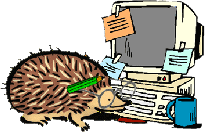
These are some of the adorable baby hedgehogs that we have had the pleasure of raising over the years.
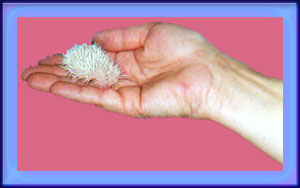 This little fella is only about 5 days old. This little fella is only about 5 days old.
We are asked all the time whether they are born with the quills or not? The answer is: sort of. The babies are born with the quills laying below the surface of the skin. They safely travel through the birth canal without injuring the mama. |
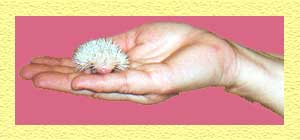 After only a few hours, the quills pop through the skin! After only a few hours, the quills pop through the skin!
The baby hedgies go through several “quilling” stages. They will shed their quills a few times between birth and weaning at about 7-8 weeks of age. |
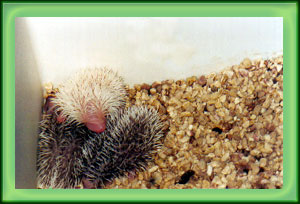 These little guys are about a week old. These little guys are about a week old.
Their eyes are still closed… but the color of their quills is easy to distinguish at this young age! This litter consists of an Albino and two Pinto hoglets!; |
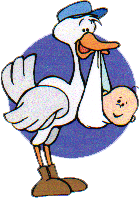
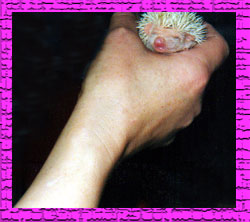 This little Albino hedgie is only about 10 days old.
This little Albino hedgie is only about 10 days old.
His eyes are still closed… but he already has started to develop that irresistible “hedgehog cuteness” that they are famous for!
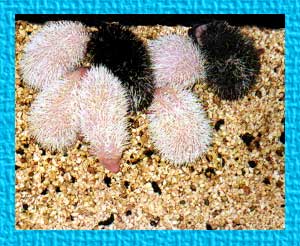 This litter of hedgies is about 2 weeks old. This litter of hedgies is about 2 weeks old.Seven babies is a big litter for hedgehogs! 3 or 4 is more common. We usually wean our babies at 7-8 weeks of age depending on litter size. When the litter is this large, the babies grow somewhat slower. It is necessary to leave babies from a big litter like this with mama for a bit longer to give them a good start! |
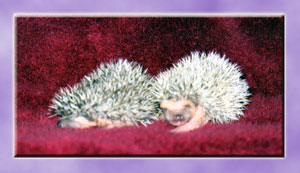
These babies are about two weeks old. |
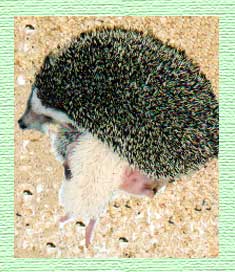 This mama hedgehog is nursing her 3 week old hoglets! This mama hedgehog is nursing her 3 week old hoglets!
Notice that this Salt & Pepper mother produced at least one white baby. Hedgehogs genetics are such that the color genes separate. This allow us to cross animals of different colors and produce youngsters of several colors in the same litter! The color genes don’t blend from murky colored offspring, but rather they separate to produce distinctly separate colored young. |
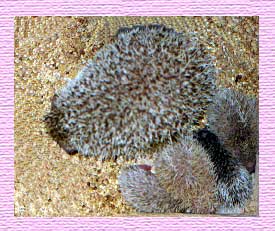
This litter is an excellent example of the diversity of colors that we breed into our animals. The mother hedgehog is a Cinnamon. The babies (from left to right) are: a Cinnamon, a light Cinnacot, a Salt & Pepper, and a dark Cinnacot (with a white stripe!) |
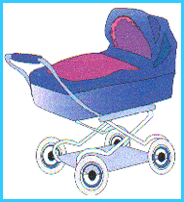 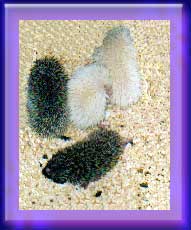 The hedgies on the right are now almost 4 weeks old. The hedgies on the right are now almost 4 weeks old.
We frequently have litters with as many ass 4 colors represented! Keeping accurate pedigrees on our breeding animals allows us to plan such litters! |
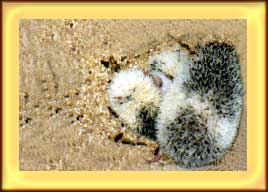 This Pinto female is nursing her litter of gorgeous Tobiano Pinto babies! This Pinto female is nursing her litter of gorgeous Tobiano Pinto babies!
They are about 4 weeks old and will have to remain with their mother for another few weeks. |
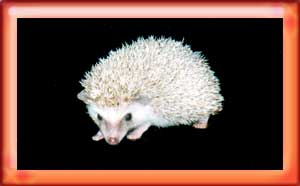
This little fella is a 4 week old Cinnamon hedgehog. |
4 week old nursing hedgies!
At this stage they are considered toddlers and they look like miniature versions of the adults! |
|
The one on the left is a Cinnacot and his sibling on the right is an Apricot. At this age, they are beginning to drink from a water bottle and run on their mother’s Whisper Wheel! |
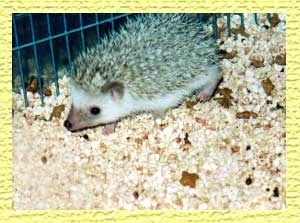 This cinnamon hedgie is almost 5 weeks old 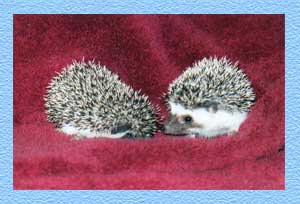 These two siblings are 5 week old salt & pepper hedgies.
|
| He has grown an incredible amount in the past month, and he is getting closer to being old enough to leave his mother and to go to his new home! |
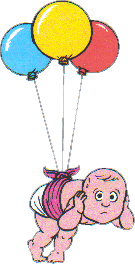 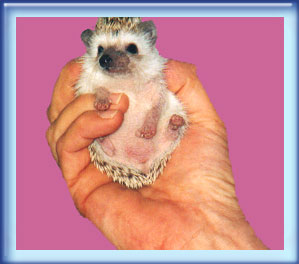
This little fella wrote the book on cute!5 week old cinnamon hoglet. |
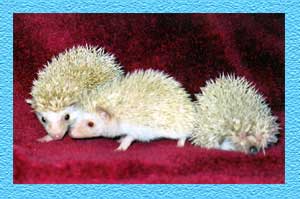 These 4 week old hoglets are of the lighter colored variety. These 4 week old hoglets are of the lighter colored variety.
The center fella is a ruby eyed Apricot. These are very popular colors which we raise on a constant basis. |
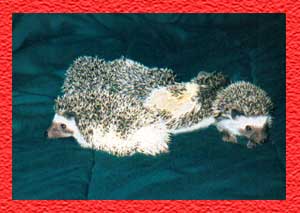 6 week old pinto and Salt & Pepper hedgies. 6 week old pinto and Salt & Pepper hedgies.
This litter of beautiful babies are close to being weaned and ready to go to their new homes. They are approaching the perfect age for their new human companions to begin the bonding and socialization process. Hedgies who bond with their new owners at a young age make great pets! |
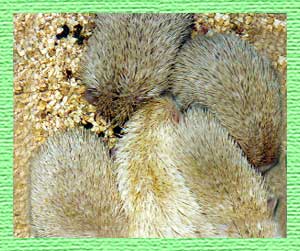 This litter of hedgies is ready to be weaned at 8 weeks of age. This litter of hedgies is ready to be weaned at 8 weeks of age.This is an extremely rich colored litter of blond hedgehogs. The center animal is a dark Apricot. His litter mates are all rich Cinnacots.This picture is a good example of the orange colored quills that these animals can exhibit. |
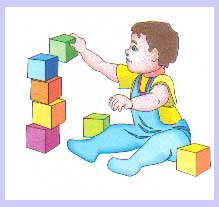 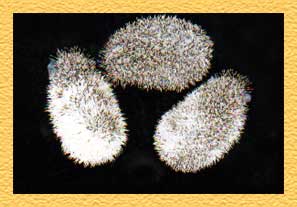 8 week old litter of Pinto 8 week old litter of Pintoand Salt & Pepper weanling hedgies. |
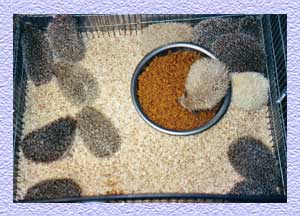 A wonderful group of weanling hedgehogs! A wonderful group of weanling hedgehogs! The animals in this cage are 7-8 weeks of age. The colors represented here are:Salt & Pepper, Cinnacot, and an Apricot.This is the ideal age for our customers to take them to their hew home! |
|

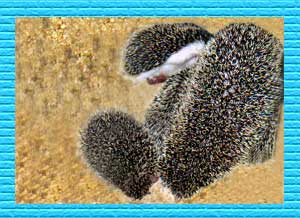
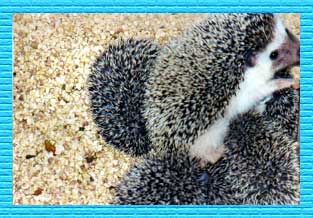
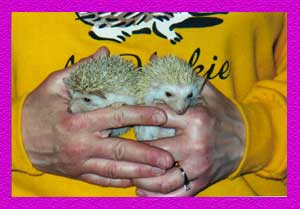
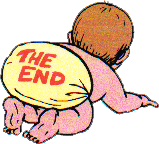 View more pictures of our hedgehogs on our
View more pictures of our hedgehogs on our 


